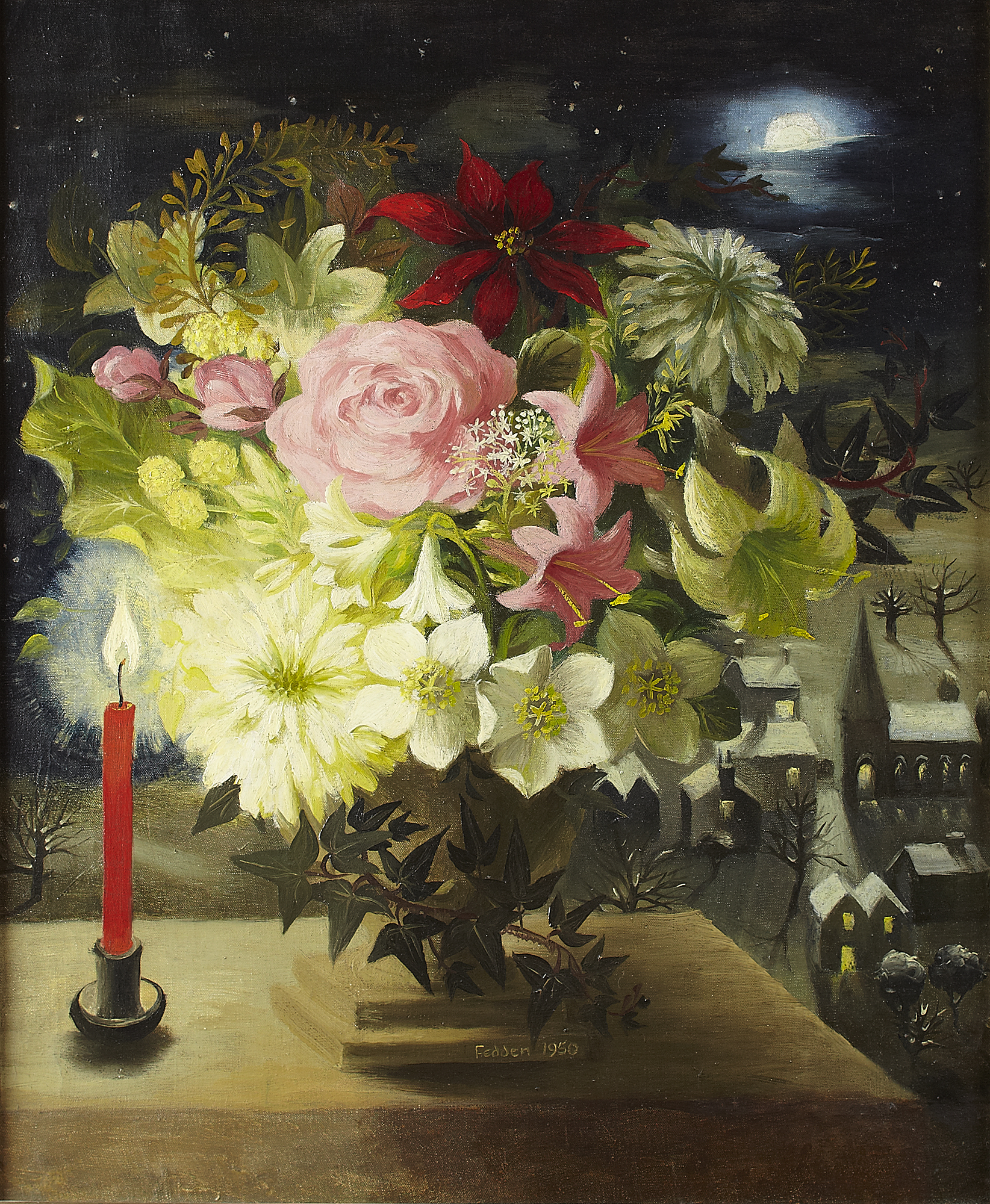MARY FEDDEN R.A (BRITISH B.1915) §
WINTER STILL LIFE WITH CANDLE
£4,800
Auction: 2 June 2011 at 19:00 BST
Description
Signed and dated 1950, oil on canvas
Dimensions
61cm x 51cm (24in x 20in)
Footnote
Provenance:Garvey Collection
Over her long career Mary Fedden has become one of the nation's most-treasured artists. Writing about Fedden's enduring appeal, Christopher Andreae declares:
Her work can become something of an addiction. More than one collector has been known to sleep on the pavement outside a gallery all night so as not to miss the opportunity of buying a favourite.
Perhaps part of the appeal of her work lies in its apparent simplicity coupled with its exquisite execution, anchored in the long pictorial tradition of Dutch still life and underpinned by her early formation at the Slade School of Art. Indeed, Fedden's is an oeuvre that merits close inspection, and while her concise and effective compositions provide immediate pleasure (demonstrated by their popularity in reproduction as prints and postcards, china and textiles), our delight can only be enhanced by a lingering gaze and appreciation of her painterly skill, her brush strokes as easily identifiable as a signature.
After a war spent in the Land Army and as a staff driver in France and finally Germany, Fedden soon built on the foundations of her Slade training, and her work was profoundly influenced by the seismic shifts which shook painting in the post-war years. Her favoured motif is that of a still life at a window, in which the gaze first savours the transient beauty of flowers before appreciating the landscape beyond, an image which appears repeatedly in the works of modernist English painters such as Paul Nash, Christopher Wood, and John Piper. Perhaps the most significant influence on Fedden's artistic and personal development, however, was her relationship with artist and poet Julian Trevelyan, with whom she lived for many happy years at Durham Wharf, on the Thames at Chiswick.
Trevelyan and Fedden married in 1951, and while the artist claims that she does not consciously imbue her still-life works with symbols and hidden meanings, we might wonder at the significance of the ivy- long a symbol of love and undying fidelity- which wraps itself tenaciously round the base of the vase in this Still Life With Candle, painted in the same year. Here we observe the freshness of the artist's post-war style, moving beyond the muted naturalism of her Slade years, and also the Neo-Romantic strain which runs throughout Fedden's work and manifests itself in the surreal atmosphere of the painting, in which summer and winter blooms mingle under the warm glow of a candle, and against the backdrop of a snow-covered landscape ripe with narrative potential.
We find the same dramatic tension in the later painting, Tatiana and the Letter, executed in 1994. This work combines elements of Fedden's preferred genre, still life, with the suggestion of a moonlit landscape beyond the open window, and the inclusion of a female figure pouring over a freshly written page. While studying at the Slade, Fedden was most affected by her tutor Vladimir Polunin, a theatre designer who had worked with the Ballets Russes, and the billowing curtain which often reappears in her paintings is a testimony to the influence which he proved to be on Fedden, who indeed designed sets for performances at Sadler's Wells before opting to dedicate herself to easel painting. The curtain not only neatly frames the composition (as in traditional works such as Vermeer's The Art of Painting), but also lends an element of theatricality, and sense that the scene might be a play unfolding before our eyes, inviting interpretation.
Indeed, it is not surprising to discover that the painting was included in an exhibition held to accompany Glyndebourne's 1994 opera season. Fedden (who as an opera lover has designed a number of programme covers and other promotional material for Glyndebourne), chose to illustrate a key moment in Tchaikovsky's Eugene Onegin. In a celebrated aria, the heroine, Tatiana, realising that she is utterly in thrall to the cold Onegin, takes up her quill to declare her love for him:
I write to you - no more confession
is needed, nothing's left to tell.
I know it's now in your discretion
with scorn to make my world a hell.
Alas for Tatiana, her love is scorned until it is too late, yet Fedden clearly captures the anguish which drives Tatiana to confession, and the hope which fills the moment of the letter's composition, translating onto canvas the magical beauty of Tchaikovsky's score.
Mary Fedden was elected to the Royal Academy and received the OBE in the 1990's. Her work is included in numerous public collections including The Tate Collection, HM The Queen's Collection, and National Gallery of New Zealand.

